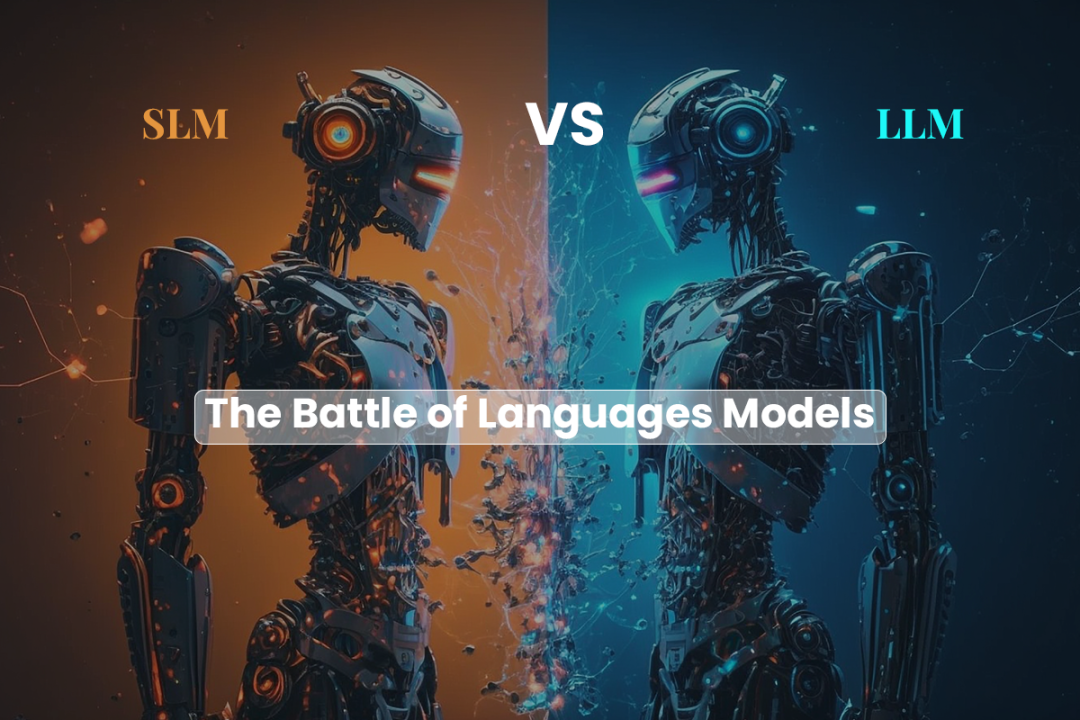Small Language Models (SLM) Gaining Popularity While Large Language Models (LLM) Still Go Strong
Created On, 11 Nov 2024





Small Language Models (SLMs) are gaining popularity due to their resource efficiency and ease of implementation in more limited, specific applications. In contrast, Large Language Models (LLMs) continue to dominate and are used for more complex tasks that require deep language understanding. Both types of models have their own advantages and can complement each other in language technology applications.
Small language models (SLMs) are gaining popularity as large language models (LLMs) continue to thrive. SLMs offer the benefits of efficiency, cost, and privacy because they can be run directly on devices without an internet connection, unlike LLMs that require online access and large infrastructure. In this column, we explain how large LLMs enable the discovery of SLMs as a simpler alternative, meeting the need for flexible and accessible AI for users.
The fundamental difference between LLMs and SLMs lies in the depth of response and the ability to access information. LLMs, with their large data capacity and internet connectivity, can provide more detailed and complex answers. This large structure supports LLMs’ ability to understand and elaborate topics in depth, even in new contexts. This makes LLMs suitable for applications that require a high level of accuracy and detail in language processing.
On the other hand, SLMs typically operate independently without internet access, resulting in more concise and direct answers. SLMs focus on effectiveness and efficiency in small devices, thus being able to handle user needs that do not require very detailed or complex information. However, with a certain focus, SLMs can excel in specific areas compared to more general LLMs, such as in the application of a particular topic or domain.
Interestingly, some modern SLMs allow internet access to enhance their capabilities when needed. This adds flexibility as users can choose when the SLM needs to update information or stay offline. This capability helps SLMs provide a balance between autonomy and accessibility, which extends their functionality in more practical real-world applications.
Here is a general comparison between large language models (LLMs) and small language models (SLMs) in various aspects:
Research on small language models (SLMs) is currently booming. Creating an SLM can be like trying to pack ten pounds of rocks into a five-pound bag, meaning there is a huge challenge in simplifying the complexity of a large language model (LLM) into a smaller version. Some developers try to shrink existing LLMs, while others design SLMs from scratch to be more efficient. This challenge requires a clever approach to simplifying the internal data and optimizing processing.
Creating an SLM allows the same tactics to be used to improve the efficiency of LLMs. If LLMs can be made more resource-efficient, they can be scalable without having to add expensive computing power. This approach continues to open up huge opportunities for developing more resource-friendly LLMs.
A recent study by Chien Van Nguyen and colleagues notes that SLM offers efficiency in low computational usage, making it ideal for mobile and edge devices. While SLM is promising, risks such as social bias and hallucinations remain challenges that should be addressed in future research. This article is an essential resource for those looking to further explore SLM.
Welcome to our blog section where we share the latest updates, insights, and stories from our community.

Digital citizenship is the ability of individuals to use digital technology w..

A growing number of governments globally are adopting artificial intelligence..

Large Language Models (LLMs) are unlikely to become obsolete or fade away any..

